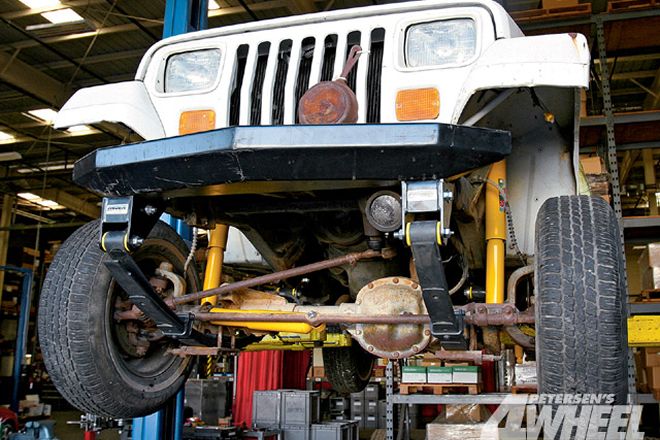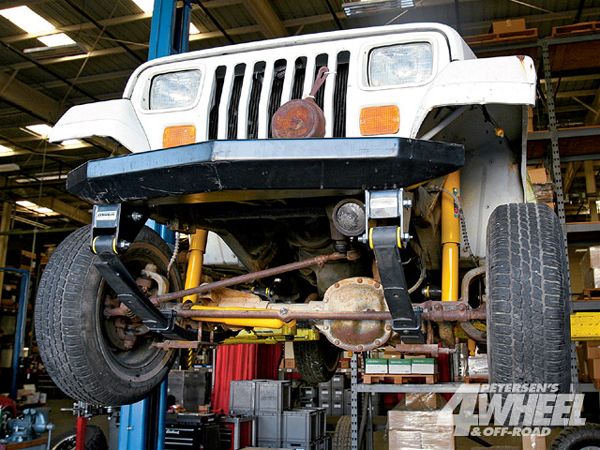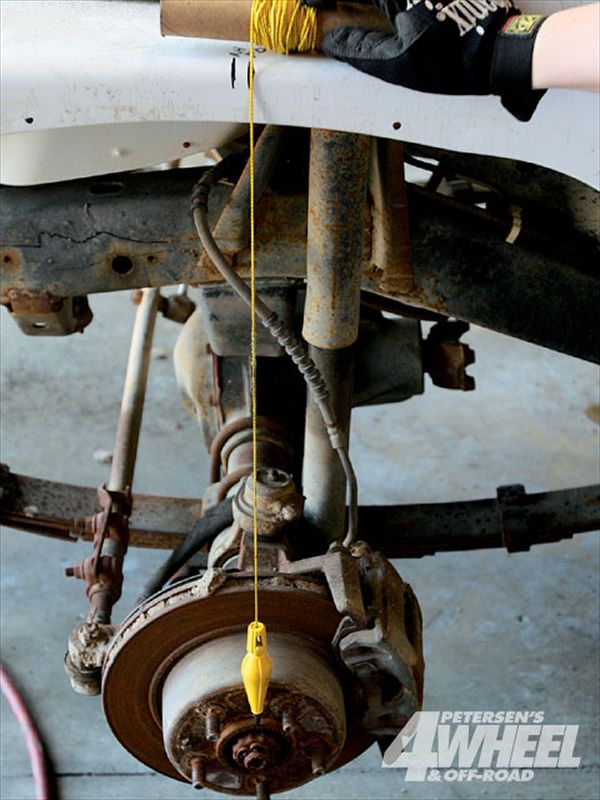
 Fred Williams
Brand Manager, Petersen’s 4Wheel & Off Road
Fred Williams
Brand Manager, Petersen’s 4Wheel & Off Road

Leaf springs are some of the toughest, most dirt-simple suspension designs ever, but that doesn't mean they can't be made better. For example, almost every Jeep CJ and YJ ever made has come with the front leaf-spring shackles mounted at the front of the Jeep (one version of the CJ-5 made for the military and referred to as the M38-A1 came with the front shackles on the rear of the front spring). What difference does having these shackles in the front or rear of the springs make, you ask? Plenty. But like manual versus automatic transmissions or black coffee versus cream and sugar, it is an argument that will never be decided definitively.
A leaf-spring suspension is made up of multiple curved steel blades, or leaves, bolted together so that they form a leaf pack. Each leaf in this pack is usually consecutively shorter than the leaf above it. Though the leaves are bolted together, they can go from curved to flat as the suspension flexes. If both ends of the leaf pack were firmly attached to the chassis, they would not flatten out and thus would not allow the suspension to flex at all. To deal with this flex, leaf springs have a shackle at one end that swivels to allow the leaf pack to grow longer. As the leaf spring grows longer, the axle moves toward the shackle end of the leaf pack.
This is where the debate arises. As your vehicle comes up to an obstacle, the front axle will want to move into the obstacle if the front shackle is at the front of the leaf pack. Proponents of the front shackle believe this is good because in theory it forces the tires to have more traction as the spring is being compressed and pushing the axle forward at the same time.
The rearward shackle team believes that moving the shackle to the rear of the leaf spring allows the axle to move backward upon encountering an obstacle, rock, ditch, and so on. They feel this is a better option because it takes the forward movement of the vehicle and allows for some relief from a jarring hit. They feel the rearward front shackle makes for a softer ride and a front suspension that's friendlier to high speeds.
A wrench can be easily thrown into this whole discussion: What if the leaf springs are flat, not curved? When a flat leaf spring has a front shackle, compression actually pushes the axle backward, and vice versa when it has a rear shackle. Whatever direction you choose, understanding why your shackles are the way they are is important.

1. We started with a ratty old '95 Jeep YJ that had broken leaf springs from its short but abusive life as a ranch tractor. The overall plan is to eventually put it on 35- or 37-inch tires, but for now we just wanted to replace the broken parts and get it a little higher in the air. We also wanted to showcase the process and theory of a shackle reversal. First we measured the center of the axle at ride height and at full droop. As you can see by the marks on the fender, the axle moves forward the more it compresses and rearward as it droops out. Removing all the front suspension parts was job number one. Old worn-out shocks were round-filed along with the broken leaf-spring packs and all bushings and shackles since we would be replacing them all. Be sure to keep the U-bolts, nuts, and plates if you didn't order new ones. We recommend always getting new U-bolts, but forgot to order them prior to this story.




